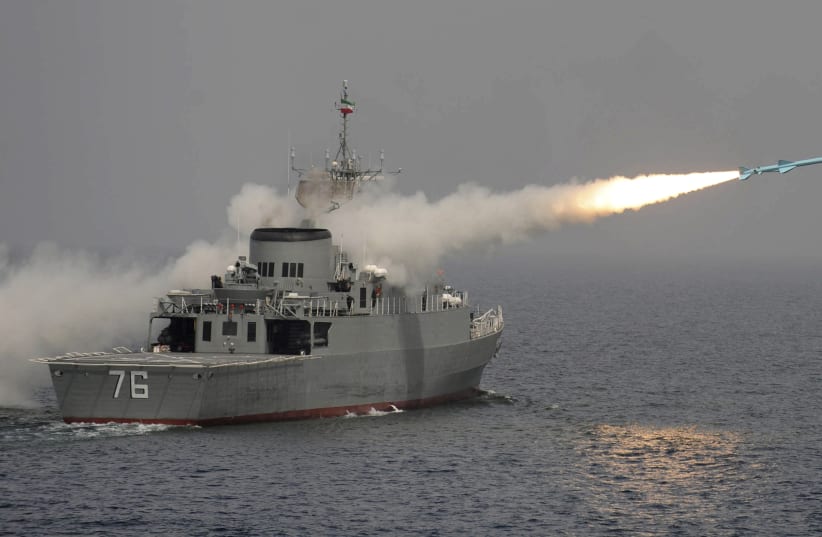The Islamic Republic has long threatened Israel and has transferred missiles and missile technology to Hezbollah over the years. It has also reportedly transferred precision guided munitions to the terrorist group. US media reports indicate that Iran transferred ballistic missiles to Iraq in the fall of 2018 and the fall of 2019.Iran’s new video shows that on June 19, 2017, IRGC members congregated at the launch sites, reported to be in Kermanshah province and a neighboring area. Rockets of the Zolfaghar type, with a range of some 700 km., were loaded and readied. This type is believed to be built on the model of a Fateh 110 rocket and was unveiled in 2016.The Zolfaghar uses solid fuel. It is believed that six were fired in 2017. Iran also says the Qiam 1 rocket was used. This is the same style that was used against the US in January 2020. First tested in 2010, it is based on a Shahab-style rocket with a range of 800 km. Heaver and longer than the Zolfaghar, it is a liquid-fueled weapon. It has a 750 kg. warhead, compared to the one on the Zolfaghar, estimated to weigh 500-600.Why is Iran releasing new videos today? Partly because it wants to show that US sanctions have not deterred its missile program. Even though these are old videos, the idea is to convey Iran’s capabilities.In the absence of new ballistic missile tests or use, the concept is to keep it “evergreen” by showing new photos. There is also likely a message here for Israel. This is due to recent foreign posts on social media and reports that the US sanctions on Syria and other issues are stoking tensions. Iran has boasted in the past about long-range drones and missiles.Iran showcases new footage of its Zolfaghar missile used in June 2017 to strike ISIS targets https://t.co/Mj2iYigQwm
— Middle East Center for Reporting and Analysis (@MidEast_Center) June 18, 2020
However, the attack on ISIS was a clear example of its capabilities. It fired missiles over Iraq, where US-led coalition forces operate, and struck near Albukamal in Syria. Iran was thus willing to shoot ballistic missiles over a neighboring country into a third country. It also coordinated with units on the ground using drones. This was not easy because it had to have those units and drones in place at the time of the strikes. The recent video shows the drone capturing footage.Iran has transferred several types of its drones to Syria and Hezbollah over the years. In February 2018, an Iranian drone invaded Israeli airspace and was shot down. Tehran used drones in 2018 when it fired missiles at Kurdish dissidents in Iraq. It is not known if it used drones when it struck at US bases, but clearly it is aiming for these multi-layered capabilities.Tehran has also used its ballistic missile and drone technology against Saudi Arabia, carrying out numerous attacks between 2017 and 2019. The US has indicated that some of this technology is being moved on boats or small ships off the Gulf of Oman.Very few countries have the level of technical ability Iran has: able to use long-range precision missiles and drones. Iran says its latest missiles are accurate up to 10 meters. If this is true, Iran would have developed a very complex and threatening missile program.This has raised concerns in the US and elsewhere, especially as the Islamic Republic appears to be walking away from its commitments under the 2015 Iran Deal.لحظه شلیک موشک ها ایرانی لذت بخش ترین تصاویری هست که میشه دیدروح شهید طهرانی مقدم شاد که توان موشکی رو مدیون تلاش های بی وقفه این مرد بودیم پ.ن:ویدئو از عملیات موشکی لیلة القدر سال 96 با موشک های ذوالفقار و قیام pic.twitter.com/1DMtkSGbxc
— Muhammad (@Muhmd52) June 17, 2020
